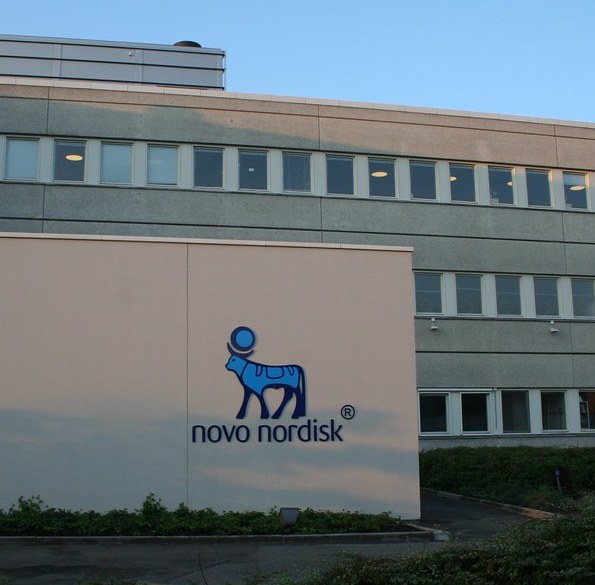Some big numbers are getting thrown around about these GLP-1 inhibitor drugs for the treatment of obesity, like Wegovy and Ozempic.
What might their impact be? The Milken Institute estimated obesity costs the US economy $1.6 trillion per year, which is almost 7 per cent of GDP. Should the drugs make a dent in that figure, they’d be right up there with the most impactful inventions ever.
Exciting forecasts abound. Bank of America estimated that 14 per cent of Americans will be on the drugs by 2030. An American Airlines analyst forecast that lighter passengers would save the company $80 million per year. One estimate is that alcohol volumes could drop by 3 per cent. Another is that the $250 billion market for cardiovascular drugs could shrink 10 per cent.
The forecasts are extraordinary and speculative, but they’re based on a certain amount of fact. Shares in Novo Nordisk, a maker of obesity drugs, popped by 13 per cent last year when a study was published showing Wegovy reduced the risk of heart attacks and strokes by 20 per cent. And in a recent earnings call, a Walmart executive said customers who are using these weight control drugs are spending less on food.
For the drugmakers, it doesn’t get much better than this. About 40 per cent of American adults are obese. New treatments such as Wegovy and its competitors need to be taken continually over a patient’s life. The treatments cost between $12,000 and $14,000 annually.
These weight loss drugs will be among the most profitable ever. One analyst at the investment bank Barclays forecast the market for weight loss and diabetes drugs would come to be worth $200 billion per year.
The market is excited. The Danish pharmaceutical company Novo Nordisk was the first to bring these drugs through clinical trials. Novo Nordisk was a relatively small and undiversified pharma company, specialising in diabetes care. Since the importance of weight loss drugs began to sink in in 2020, Novo Nordisk’s share price has risen 250 per cent. It is now the most valuable company in Europe, with a market cap of $467 billion, and the 15th most valuable company in the world.
Eli Lilly is the other major pharma company to bring a GLP-1 inhibitor drug through trials. Eli Lilly’s share price has risen 352 per cent since 2020. Eli Lilly is the tenth most valuable company in the world.
The market expects a lot of Eli Lilly and Novo Nordisk. To justify their spot among the 15 most valuable companies in the world, they'll need to at least double their earnings in the coming years. The following chart shows how their 2022 earnings compare to their peer mega caps.
When the market values Novo Nordisk at $467 billion, what specifically is it saying about the company and the market for obesity drugs?
I built a simple discounted cash flow model to work it through. The model takes into account a few key variables and uses them to estimate Novo Nordisk's fundamental value.
The way it works is it sums the cash Novo Nordisk is expected to generate in the coming years, and then discounts it by a number that reflects its riskiness and the other opportunities available.
The numbers used to estimate cash flows are the sales growth rate, operating profit margin, incremental working capital, incremental capital expenditure and tax rate. The numbers used to estimate the riskiness of the cash flows, and the opportunities available elsewhere, are the industry beta, risk-free rate, and expected S&P500 return. You can view the model here. If you want to mess around with it, just make a copy, and you can see for yourself how the assumptions feed through to the final valuation.
If you do mess around with the model, you'll notice two numbers move the dial: The sales growth rate and the operating profit margin.
Novo Nordisk's operating margin isn't expected to change much in the coming years. What is expected to change is its sales. Novo Nordisk anticipates selling $4.5 billion of obesity drugs in 2025. This year, their sales grew 174 per cent, and 244 per cent in the USA.
Novo Nordisk anticipates sales will grow by 33 per cent over the next year. To justify its valuation of $467 billion, going by my model, it'll have to maintain sales growth of 15 per cent going forward. Over the next years, that rate of sales growth will lead to a 238 per cent rise in free cash flow over 2022's level.
Novo Nordisk made $19 billion in sales in 2020, and the market is forecasting Novo Nordisk alone will make about $60 billion per year by 2028. The total size of the market for obesity drugs will be a multiple of that number. Right now, Novo Nordisk has a 54 per cent market share in the GLP-1 family of drugs. When Eli Lilly and the rest get their act together you might expect that to decline to say 30 per cent.
What the market is saying is that ten million people, at the very least, will be using the drugs within five years. Unless the market forecast is wrong, the world is about to change noticeably.
Further reading: How the thinness premium is affecting women’s careers and earning potential


